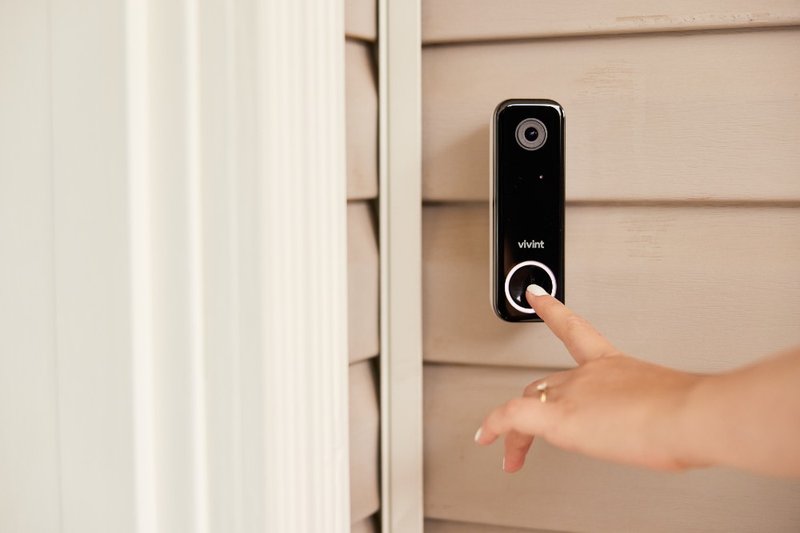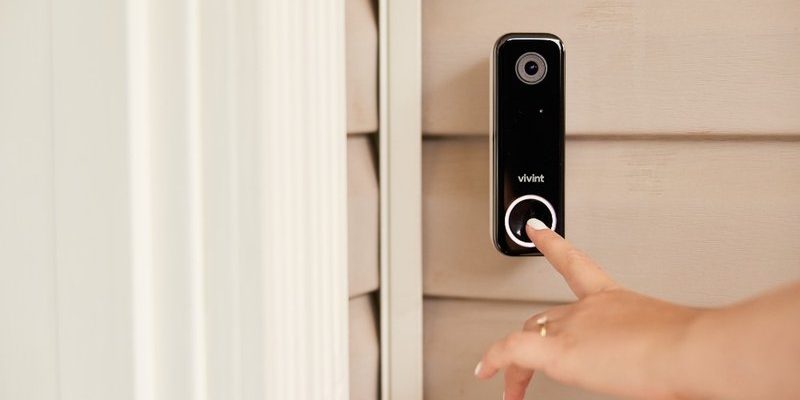
The Vivint smart remote, designed for Vivint’s smart home ecosystem, helps control everything from your security system to connected lights—sometimes with just a click. But there’s a catch: like any gadget that talks wirelessly to a hub, it has limits. Understanding just how far you can wander with this remote before it gives up is crucial for peace of mind (and avoiding unnecessary sprints back to the living room).
Understanding Vivint Smart Remote: What Does It Really Do?
Let me explain how this remote fits into the bigger Vivint picture. Vivint’s smart remote isn’t your grandma’s old TV clicker—it syncs up with your Vivint panel, acting as a wireless command post for your home. With the right code and a successful pair, it can arm your system, control lights, and sometimes even unlock doors, depending on your setup.
Here’s the thing: The remote is built to communicate wirelessly with the Vivint Smart Hub or panel. It doesn’t use Wi-Fi or Bluetooth, but a specialized radio frequency, typically the 345 MHz or 433 MHz bands, depending on the model. This isn’t just technical jargon. The frequency determines how well the remote’s signal travels through walls, floors, and even people wandering around with armfuls of groceries.
Now, if you’ve ever tried pairing a remote that refuses to cooperate, you’ll understand the importance of a clean sync. Vivint makes it relatively painless—most remotes can be paired, reset, or even re-coded in just a few steps. But none of that matters if you’re standing outside the remote’s range.
Typical Range of Vivint Smart Remote Indoors and Outdoors
You might be wondering: How far can you actually stray with the Vivint smart remote before it stops working? Under typical *indoor* conditions, Vivint specifies a reliable range of about 100 feet (30 meters)—but real-world results can vary. That’s because things like thick walls, metal appliances, or even the neighbor’s Wi-Fi router can mess with signal strength.
Outdoors, with fewer barriers, users sometimes report pushing the range up to 200 feet (60 meters) before the remote drops out. But let’s be honest, very few people actually control their home security from that far down the driveway. And, of course, weather or electrical interference can play a role.
Here’s a simple table to visualize what you might expect:
| Environment | Typical Range |
| Indoors (walls/floors present) | Up to 100 feet (30 meters) |
| Outdoors (line of sight) | Up to 200 feet (60 meters) |
Don’t forget: these numbers are estimates. If your house is built like a medieval fortress, expect the range to shrink.
What Affects the Range of a Vivint Smart Remote?
There’s no sugarcoating it—remote range can be surprisingly finicky. Several factors can shrink or expand that coverage. For starters, *construction materials* are a big one. Concrete, brick, or metal walls eat up radio waves like a black hole. Wood and drywall? Much friendlier to your signal.
Next up is battery health. A dying battery won’t just refuse to unlock the door; it’ll also lose connection much sooner, giving you a lot less range. So, if your remote stops working in the hallway where it used to work fine, check the battery before panicking.
Wireless interference is another sneaky culprit. Other devices—like baby monitors, old cordless phones, or microwaves—could crowd the airwaves and clip your remote’s wings. Even the Vivint system itself, if overloaded with too many paired devices, might start dropping connections. That’s why troubleshooting the environment (and not just the remote) really matters.
Pairing and Syncing Vivint Remotes for Maximum Range
Honestly, getting the most out of your Vivint smart remote starts with a clean pair and sync. If you’re working with a fresh remote, or just reset an old one, following the right process ensures you’re not losing precious range right from the get-go.
Here’s a quick step-by-step guide:
- Make sure the remote’s battery is fresh and properly installed.
- Bring the remote close to your Vivint panel—ideally within five feet.
- Follow Vivint’s pairing instructions on the panel, usually involving a button press on the remote until a light blinks.
- Check the panel to confirm the remote is recognized and synced.
- Test the remote function in various locations, starting close and moving further out toward your usual usage spots.
If pairing fails, don’t throw the remote across the room (tempting as it is). Try resetting it, checking the code input, or even restarting the hub. Sometimes, a simple battery swap does wonders.
Troubleshooting Common Vivint Smart Remote Range Problems
If your Vivint smart remote’s range feels shorter than your patience, you’re not alone. Range problems crop up for a lot of users, especially in older homes or houses with thick walls. The first thing to check is the battery. Seriously, a weak battery can make range seem laughably bad. Changing it out is a good first move—kind of like checking if your computer’s plugged in before calling IT.
If a fresh battery doesn’t help, try re-pairing the remote with your hub. Sometimes, a bad sync or a code issue can leave your remote limping along. Double-check that there aren’t too many devices crowding your Vivint panel. Rare, but it happens.
Moving your Vivint panel to a more central location can boost the remote’s effective range. Also, look for sources of interference around your home—microwaves, thick metal furniture, or even a fish tank can disrupt signals. If all else fails, reach out to Vivint’s support team. Sometimes, a firmware update or remote reset solves the mystery.
“You don’t have to settle for weak range. Small changes—like relocating your panel or checking for interference—can make a world of difference.”
Comparing Vivint Smart Remote Range to Universal Remotes and Alternatives
You might be wondering how Vivint’s remote stacks up against other types. Universal remotes, popular for TVs and some smart devices, tend to use infrared or Bluetooth. That means their range is usually shorter—often just line-of-sight, and maybe 30 feet if you’re lucky.
Vivint’s remote uses radio frequency, which lets you control devices through walls or even from outside. That puts it a step (or several steps) ahead when it comes to home security needs. However, some universal smart remotes for home automation—think Harmony Hub—rely on Wi-Fi, which can stretch even further, assuming your network is solid.
If you need longer range or want full control from anywhere, Vivint’s own mobile app lets you manage systems over Wi-Fi or cellular. Still, the physical remote offers quick, no-fuss access, especially if your phone’s dead or missing. It’s about picking the right tool for the job.
Best Practices to Maximize Your Vivint Smart Remote Range
Getting the most from your Vivint smart remote isn’t rocket science, but a few simple habits go a long way. Always keep the remote’s battery fresh. A weak battery can cut your range in half, no joke. If your panel is tucked away in a corner behind a giant fridge, consider moving it to a more open, central spot.
When pairing a new remote, do it as close to the panel as possible. Test your remote all around your home—especially in those far-flung halls or backyard spots where you might want coverage. If you notice dead zones, jot them down. Sometimes it’s possible to tweak the setup or move some furniture to help.
Stay on top of system updates. Firmware upgrades for your Vivint system can improve how devices connect and talk to each other. Lastly, minimize wireless clutter—keep other big electronics clear from your panel, and don’t overload your network with too many paired gadgets if you can help it.
When to Consider Other Vivint Remote Options or Upgrades
There’s no shame in admitting when the standard smart remote just isn’t enough. Maybe your house is extra big, or you need access from the detached garage. In these cases, talk to Vivint about expanded coverage options—sometimes, additional panels or extenders can fill the gaps.
Some users find that relying on the mobile app gets around range issues entirely, since it works anywhere you get a data signal. Still, nothing beats the speed of a physical remote, especially as a backup. If your system feels outdated or buggy, ask about modern replacements—newer remotes and hubs are faster, more reliable, and may even improve your range straight out of the box.
“If your smart home isn’t meeting your needs, don’t settle. There are more options than you think—sometimes a simple upgrade or add-on makes your whole setup feel brand new.”
Knowing the real-world range of your Vivint smart remote saves time and frustration. Most homes find 100 feet indoors is plenty, but walls, batteries, and interference can shrink that quickly. A little troubleshooting—like checking the battery, syncing correctly, or clearing interference—can mean the difference between flawless control and constant headaches.
The Vivint smart remote is a solid tool in your smart home kit, especially when paired with best practices and a dash of patience. If you ever feel boxed in by its limits, remember: alternatives exist, from panel upgrades to the mobile app. In the end, the real win is a system that works for you, wherever you roam in (or around) your home.
